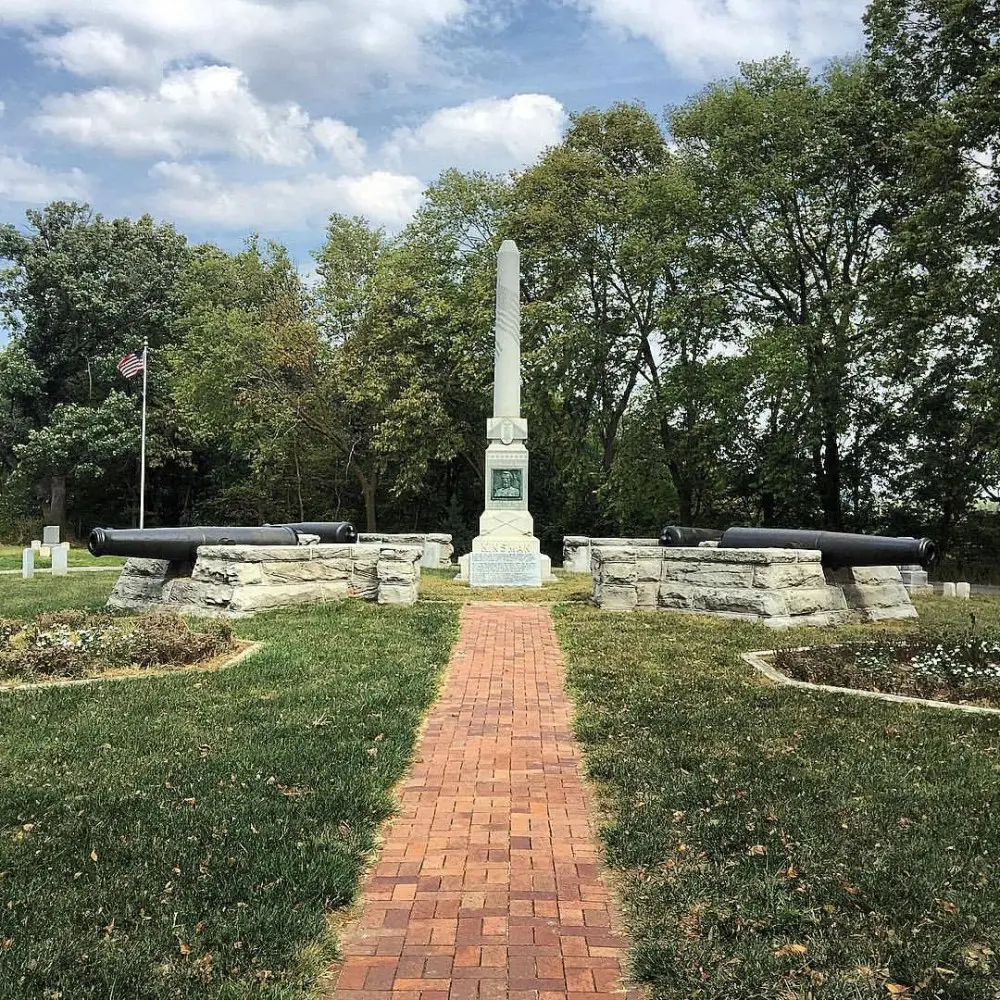Don’t let Iowa’s quiet landscape fool you – communities across the state conceal intriguing pasts linked to some of the country’s most infamous outlaws. Get a glimpse into the crime sprees of Jesse James, Bonnie & Clyde, Al Capone and others, plus mysterious unsolved mysteries.
Jesse James
Jesse James is known as an American outlaw, bank and train robber and the leader of the James-Younger Gang. Born and raised in Missouri,
he rose to fame after the Civil War (1861-1865), when he formed the gang with his brother and began robbing banks,
stagecoaches and trains from Iowa all the way down to Texas.
Ocobock Bank - Corydon
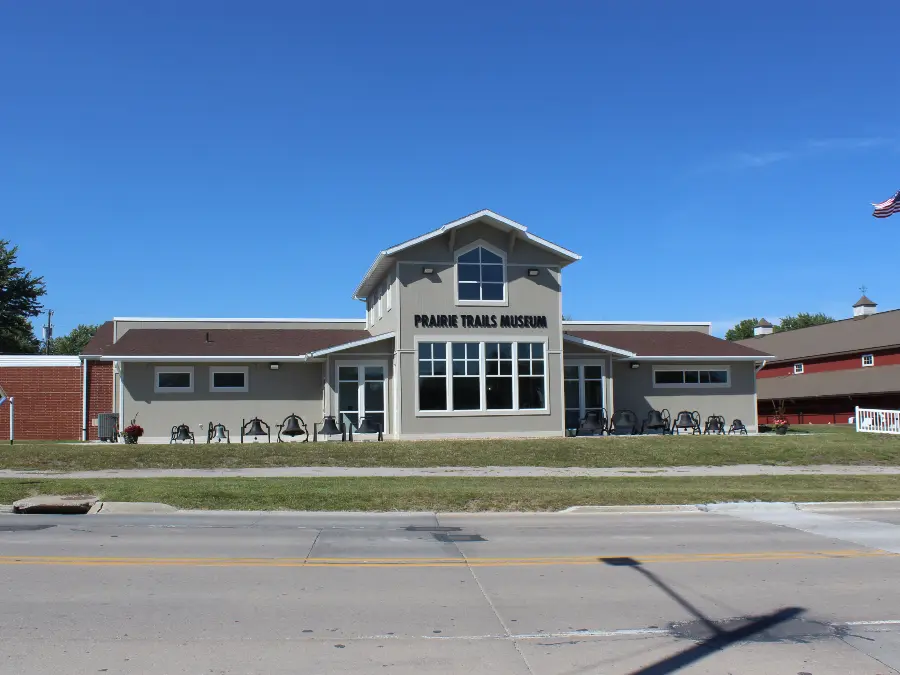
Built in 1865 as the first bank in Wayne County, Corydon’s Ocobock Bank became a famous landmark after it was robbed by the James-Younger Gang in June 1871. The gang arrived in the area pretending to be cattle buyers and initially visited the county treasurer’s office to request change for a $100 bill. However, the junior clerk told them he couldn’t unlock the safe without the treasurer present and pointed them toward the Ocobock Bank down the street. This time, the gang entered with their guns raised and escaped with around $10,000 (approximately $230,000 today). On their way out of town, the gang briefly stopped to taunt a group of locals, including the treasurer, who had gathered for a community fundraiser. They yelled, “You better check the bank!” before being chased the rest of the way.
Though the building now houses the modern-day Citizens Bank, history enthusiasts can see the very vault that Jesse James stole the money from at the Prairie Trails Museum of Wayne County, alongside other intriguing Corydon history. You can also find a mural depicting the robbery on the west side of the Wayne Theater (110 N Franklin Street).
Jesse James Train Robbery Site - Adair
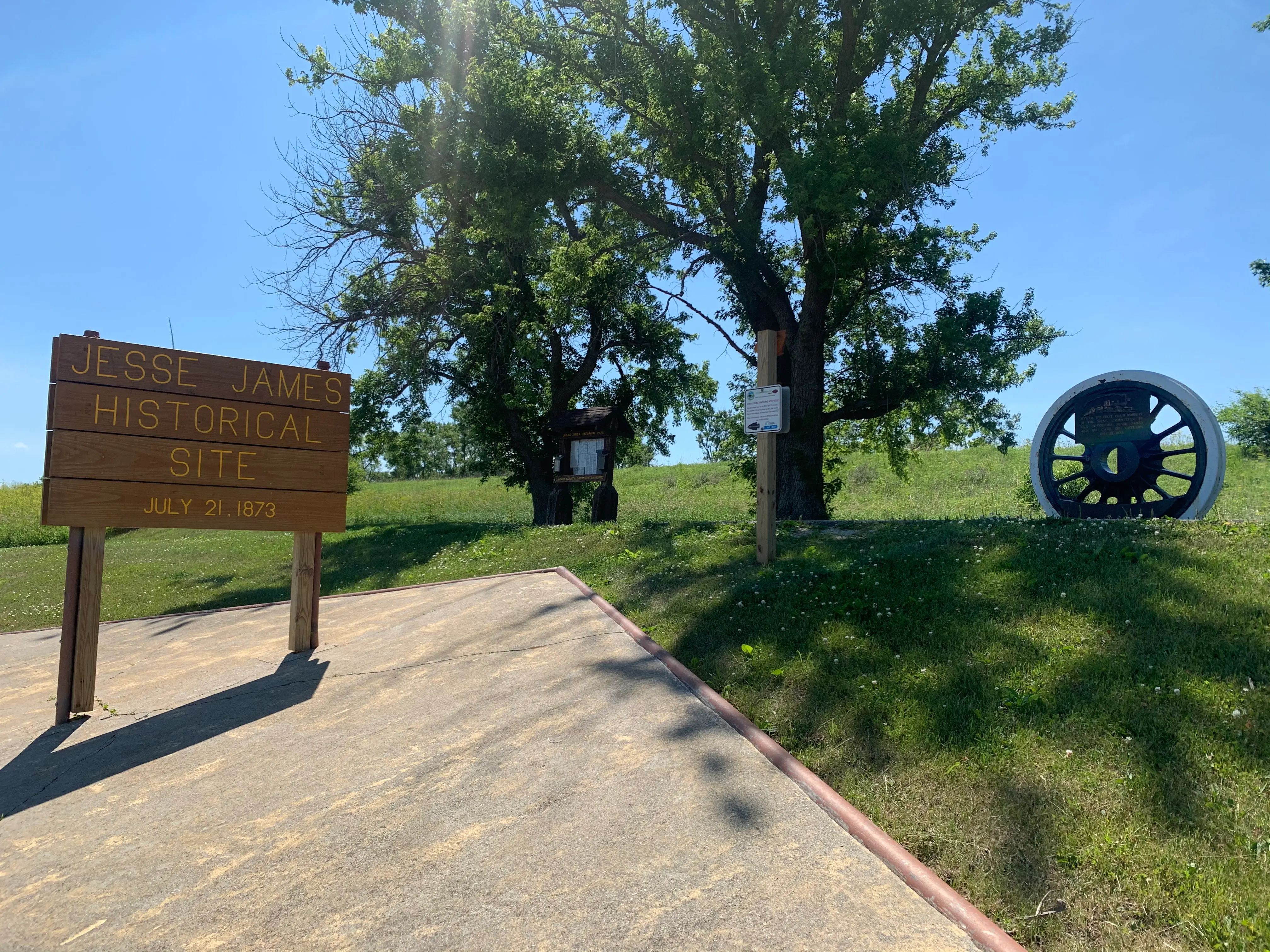
Once Jesse James and his gang grew tired of targeting banks, they set their sights on robbing trains in July 1873. After hearing about a train carrying $75,000 in gold that was set to pass through rural Adair on the main line of the Chicago, Rock Island & Pacific Railroad, the gang began planning what would become the world’s first robbery of a moving train. When the train arrived, the group cleverly crafted a way to jerk a rail out of place and cause the train to plunge into the ditch. When they finally broke into the safe, they found only $2,000 – the gold shipment had been delayed. They robbed some of the passengers, ultimately escaping with $3,000 (approximately $75,000 today).
Today, this famed robbery has been memorialized by Adair's Jesse James Historical Park, a seven-acre park of restored prairie. The roadside attraction (located 1.5 miles west of town) includes a large steam engine wheel and old railroad tracks.
Bonnie & Clyde
An American bandit duo, Bonnie Parker and Clyde Barrow traveled the central U.S. with their gang during the Great Depression (1929-1939). The Barrow Gang was active for four years
and became especially known for robbing small-town banks and stores, making Iowa a frequent target of their exploits.
Dexfield Park - Dexter
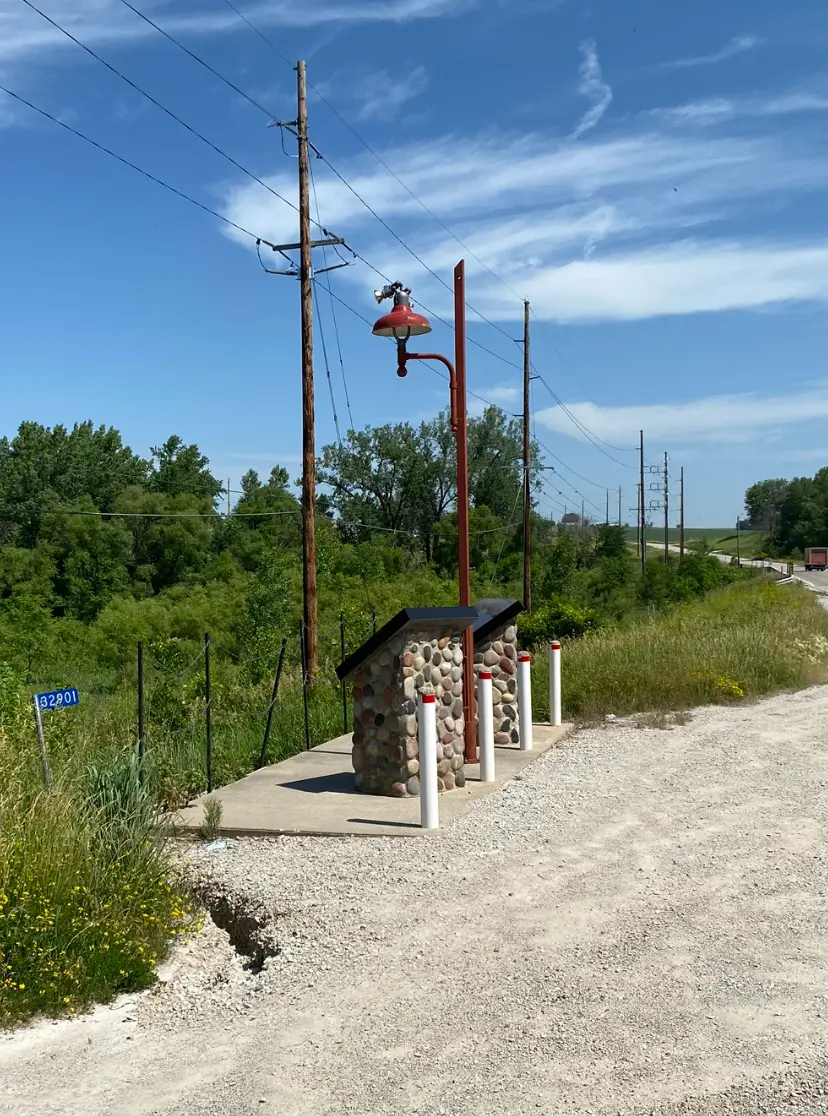
What was once the site of the first and largest amusement park in the state, Dexfield Park earned a darker reputation in July 1933 when the Barrow Gang paid a short visit. After escaping from a shootout in Platte City, Missouri, the gang retreated to Iowa and camped at the then abandoned park, hoping to let their wounds heal. However, Dexter residents noticed bloody bandages at their campsite and alerted the local police. The police then gathered all their forces and surrounded the campsite, starting another shootout. This time, two members of the gang, Buck and Blanche Barrow, were captured while Bonnie, Clyde and the rest of the gang escaped.
Though the site (located three miles north of Dexter) has since been repurposed as farmland, a small roadside attraction includes marker stones that share the story of the amusement park and shootout. The site also includes a lamp post that once stood alongside the amusement park’s Ferris wheel, merry-go-round, swimming pool, etc. To learn more about the history of the site, stop by the Dexter Historical Museum, where pictures, books and artifacts of the park and shootout are on display.
First National Bank - Stuart
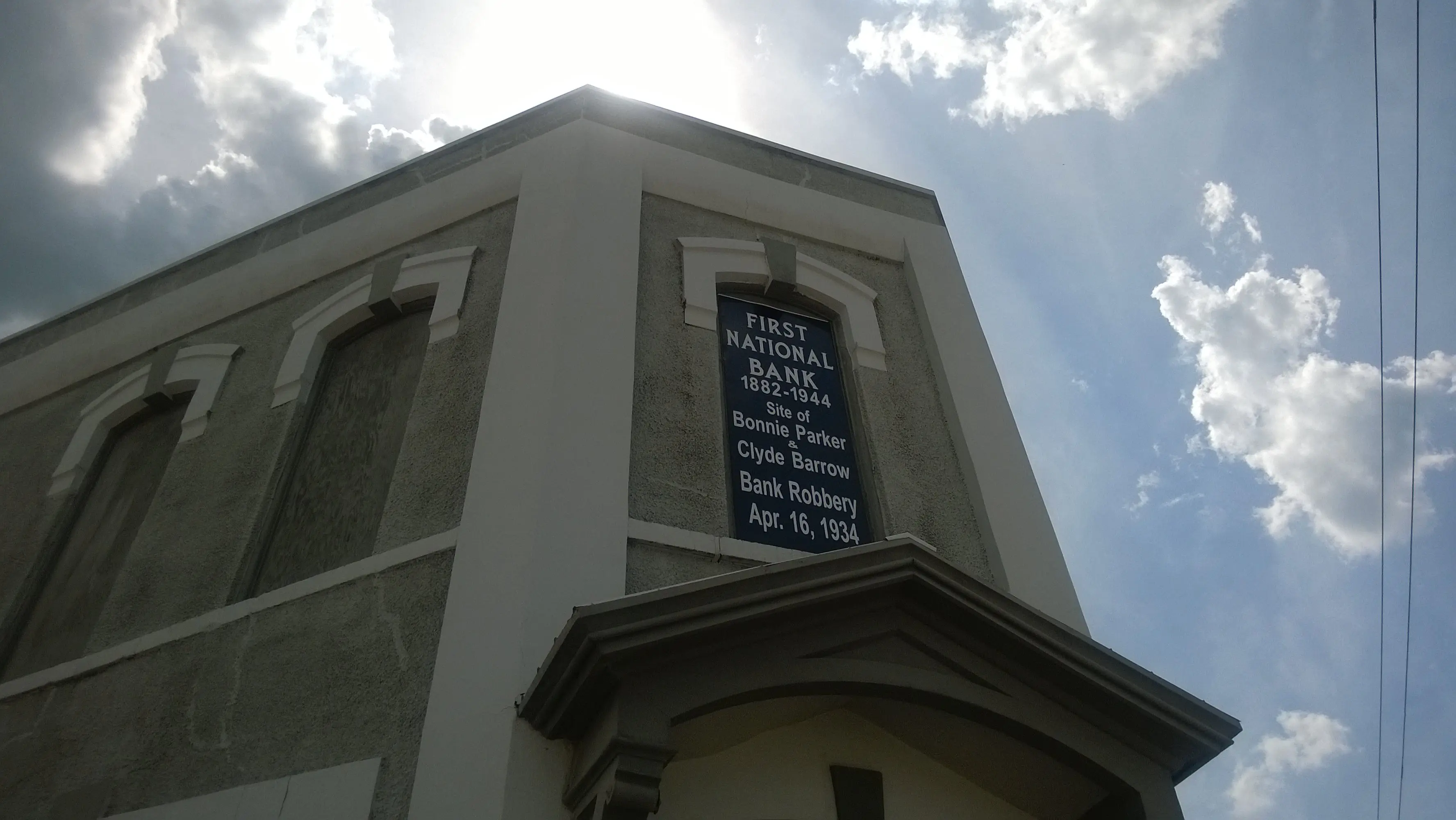
Over the next year, Bonnie and Clyde conducted a series of heists across Iowa, including in Rembrandt, Knierim and Lamoni, before landing in Stuart in April 1934, where they robbed the First National Bank. Local legend tells the story of that morning, when two men purchased a Coca Cola from the drugstore down the street, then walked toward the bank. A woman waited nearby inside a stolen Oldsmobile while the men entered the bank and held the assistant cashier, bookkeeper and two customers at gunpoint. After forcing the hostages into the bank vault, the gang made out with $1,500 (approximately $30,000 today) before being chased out of town by a local posse. This marked the gang’s final heist, as Bonnie and Clyde were killed by police in a Louisiana roadblock ambush just five weeks later.
Today, the historic building is currently being renovated with the goal of having a restaurant on the lower level and an Airbnb on the upper level. The renovations have already resulted in several unique finds, such as the building’s original tin ceilings and deposit books and bank checks dating as far back as the 1890s.
"Baby Face" Nelson & John Dillinger
Otherwise known as Lester Gillis or George Nelson, “Baby Face” Nelson was a crime partner to John Dillinger, another American gangster, during the Great Depression.
Born and raised in Chicago, he was a frequent juvenile delinquent who then joined organized crime groups as an adult and robbed a series of banks throughout the country.
First National Bank - Mason City
When Baby Face Nelson and Dillinger made their plans to rob Mason City’s First National Bank in March 1934, they thought they’d escape with $240,000 ($5.6 million today). However, despite being held at gunpoint, the teller was clever enough to hand the robbers stacks of $1 bills without them realizing until much later, when they instead discovered $52,000 ($1.2 million today).
Though the six-story 1911 building is now home to apartments and offices, it was placed on the National Register of Historic Places in 1997 and still bears the engraved name of First National Bank above its entrance. Across the street, you can find a sign that describes its historical significance. At the local library, you can also find the microfilm article from the local newspaper detailing the robbery.
Historic Park Inn Hotel - Mason City
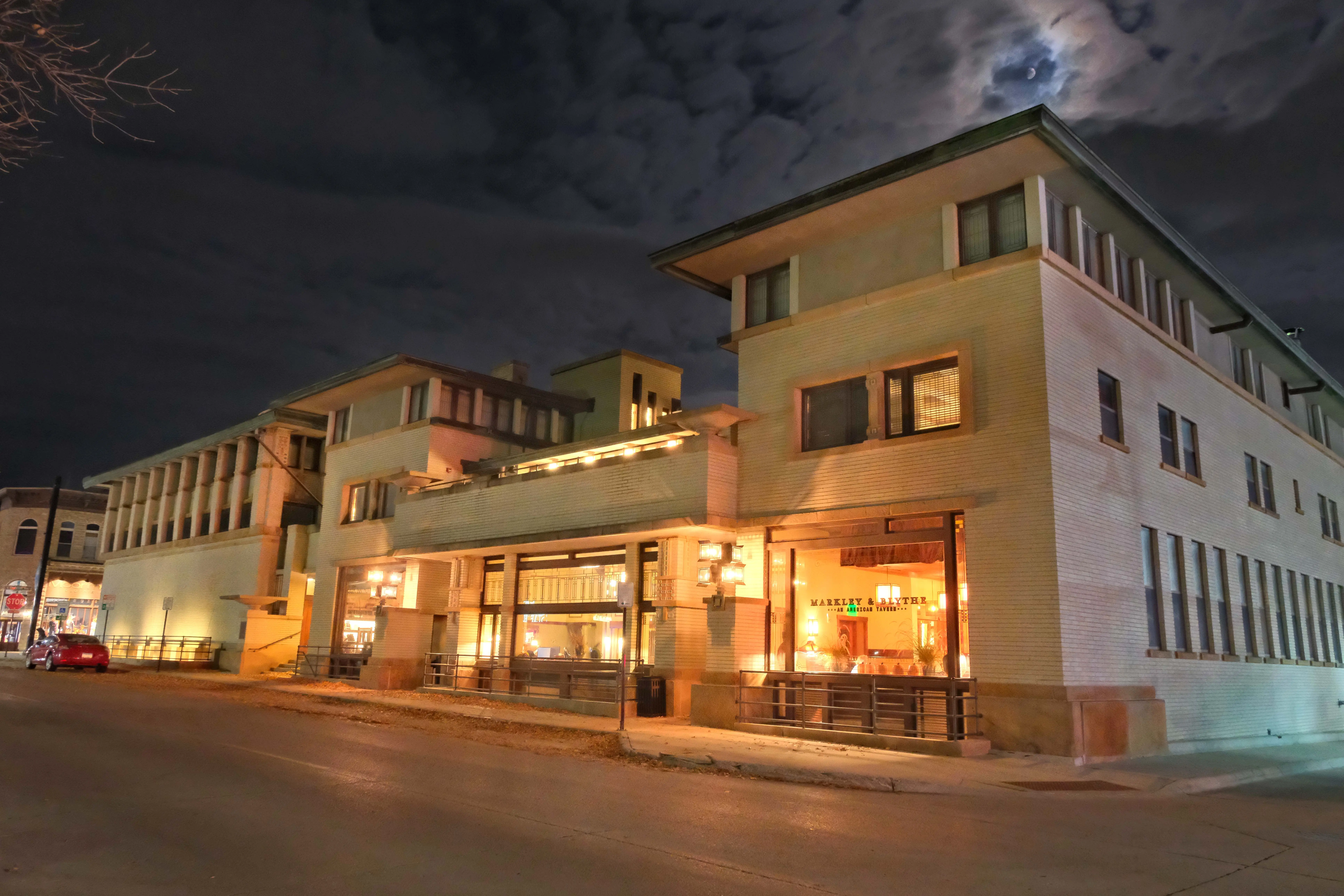
Famously recognized as the last remaining Frank Lloyd Wright-designed hotel, the 1910 Historic Park Inn Hotel has a rumored history of being a popular hiding place for infamous criminals. Though it’s unclear if Baby Face Nelson ever spent a night in the hotel, local legends and stories suggest he and other gangsters visited it on occasion. As Mason City was also a known hub for bootleggers during Prohibition, local lore suggests Al Capone may have used the hotel as a hideout or a place to conduct business.
Al Capone
Sometimes referred to by his nickname “Scarface,” Al Capone was an American gangster and businessman who rose to fame during Prohibition (1920-1933).
Though he was born in Brooklyn, he eventually moved to Chicago and became involved with Canadian bootleggers who helped him smuggle liquor into the U.S.
During his bootlegging career, Al Capone built connections to several communities and hotels throughout Iowa.
Hotel Julien - Dubuque
With a reputation of being one of the best hotels in Iowa since its opening in 1839, it’s no surprise that Hotel Julien attracted famous visitors – like Abraham Lincoln – and notorious visitors – like Al Capone. When things “got hot” (or law enforcement pressure increased) in Chicago, Capone frequently retreated to Hotel Julien and hid as he waited for things to cool down. During his hiding, he and his entourage reportedly took over the entire eighth floor and stationed guards at the stairways and elevators. From there, the group had an excellent view of Dubuque's Wagon Bridge and could keep a lookout for cops or rival gangs crossing it in pursuit. It is also rumored that Capone owned the hotel at some point due to a postcard that depicted the three hotels his syndicate managed, which included a photo of Hotel Julien alongside the former Hotels Pershing and Metropole in Chicago.
Today, the hotel remains active and welcomes visitors to spend a night inside its Beaux-Arts style elegance. It features 133 lavishly decorated rooms, including an elaborately themed suite that pays homage to its Al Capone connection.
Templeton Rye Distillery - Templeton
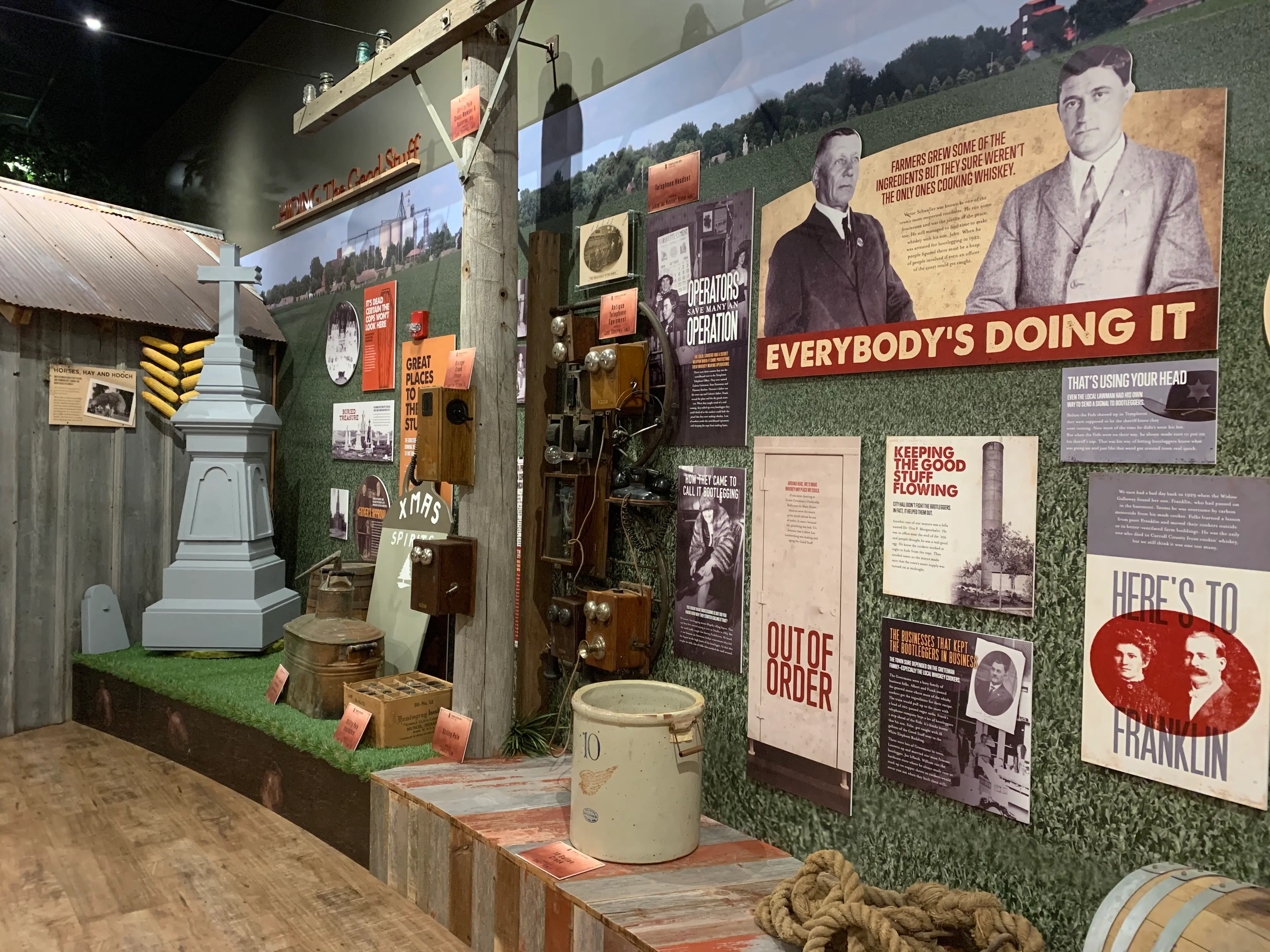
Another big-name during Prohibition, Templeton Rye was commonly known as “The Good Stuff” and Al Capone’s drink of choice. Highly sought after for its smooth taste, Templeton Rye was illegally produced in Templeton and distributed far outside Iowa’s borders by bootleggers. Al Capone was said to be one of its biggest customers and smuggled the whiskey to Chicago, where it became a key component of his overall bootlegging operations throughout the country.
Today, the distillery claims to still use the same Prohibition-era recipe that Capone loved and is a popular tourist attraction. Visitors can sign up for a 90-minute tour to learn all about the distilling process and see the onsite museum, which shares the stories of its bootlegging beginnings.
Unsolved Mysteries
Villisca Ax Murder House - Villisca
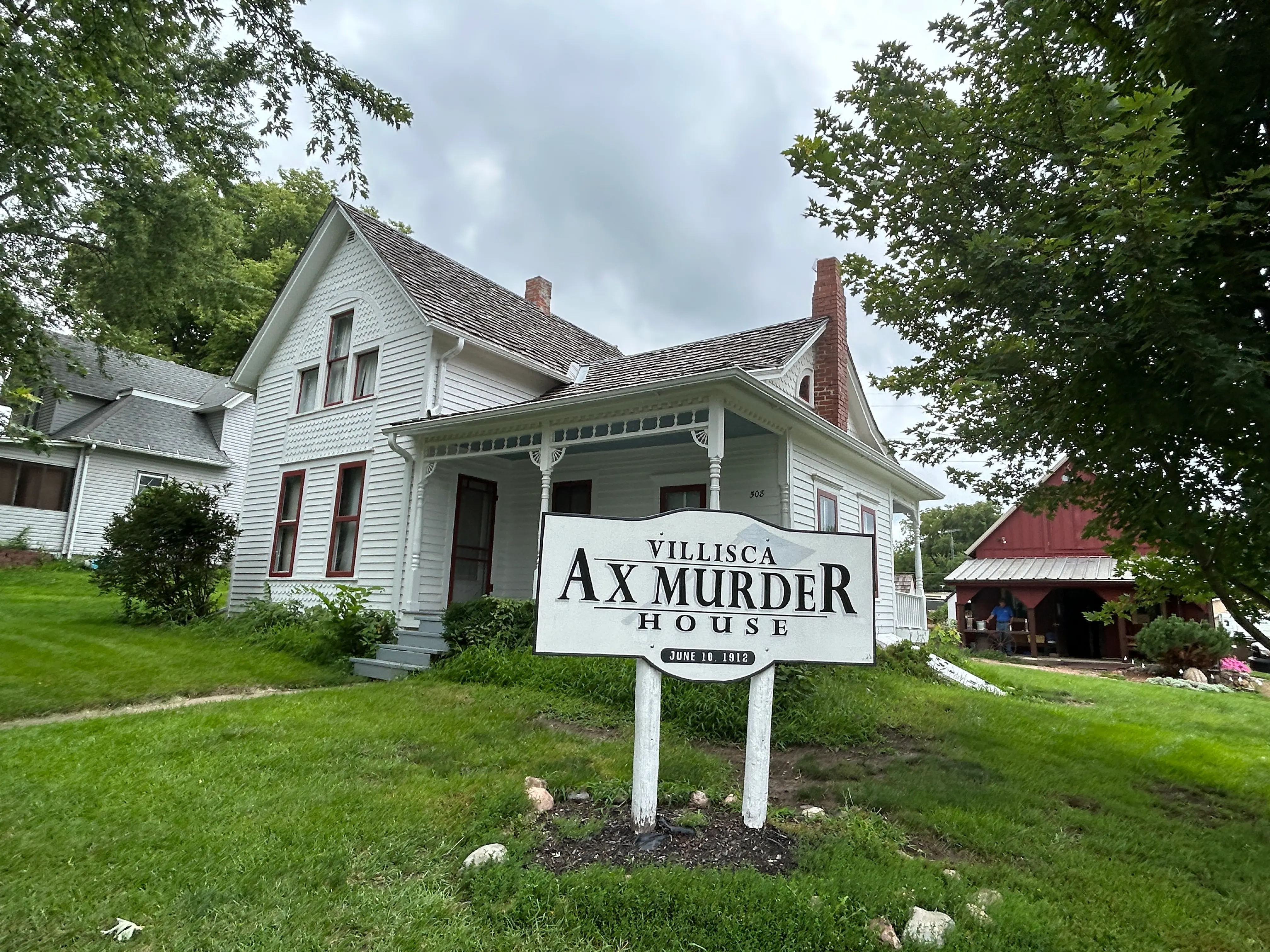
Recognized as one of the most mysterious unsolved murders in United States history, the Villisca Ax Murder House is a popular destination for paranormal enthusiasts. It tells the story of a warm summer night in June 1912, when six members of the Moore family and two visiting neighbor girls were killed in their beds. The investigation revealed that the killer had hidden in the attic and patiently waited for the family to go to bed, after which they came down to the second level, covered all the mirrors and used an axe found on the property to commit the crime. Though the killer was never found, Villisca was (and still is) surrounded by many theories as to their identity – with some believing it was part of a serial killer’s crime spree.
Now, the home is also recognized as one of America’s most haunted houses. It’s restored to look exactly as it appeared on the night of the murders, and today’s visitors can participate in a self-guided daytime tour of the home to learn about its dark history and paranormal activities. For a more in-depth experience, book a private house tour, which includes a guide and can accommodate up to 10 people. Or test your bravery with an overnight stay by reserving one of the three rooms or booking the entire home for a group of 12.
Fisher Art Museum - Marshalltown
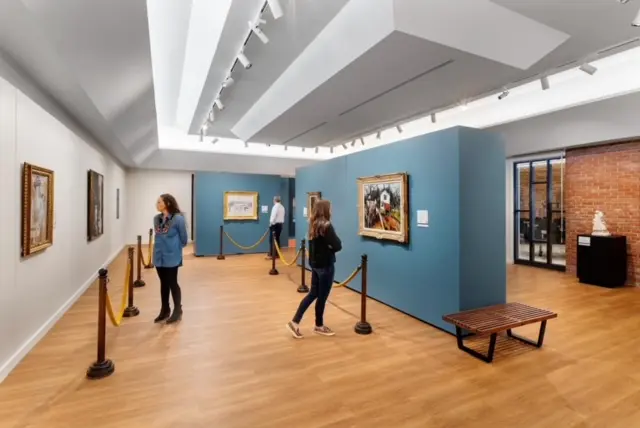
Titled “The Fishing Boats in Front of the Cliffs at Etretat,” the Fisher Art Museum’s Monet piece has an interesting backstory. Painted in 1884, the piece eventually joined the collection of the Fisher Foundation and hung in the Marshalltown community center for almost 30 years. However, in 1987, the painting was stolen, cut out of its frame while a theater group rehearsed in the space. The custodian responded to the alarms and spotted the thief as he made his getaway, but he was never caught. The painting remained missing for a year until it was found inside a mail drop box in nearby LeGrand. The art community sighed with relief as it was returned to its collection, which is now located inside the Marshalltown Arts & Civic Center. The culprit was never caught.


